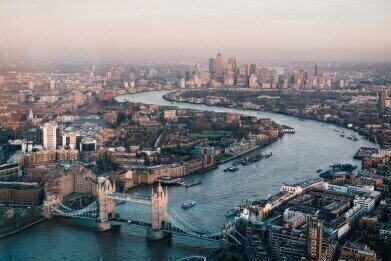Air Clean Up
Why is Air Pollution in London's Oxford Street so Bad?
Jan 24 2015
One of the busiest roads in the City of Westminster and an ever-popular destination for shoppers and tourists alike, London's Oxford Street has breached its legal limit for air pollution per annum in just the first four days of this year.
Clean Air in London - a London action group campaigning to achieve full compliance with World Health Organisation (WHO) air quality guidelines as sustainably as possible, has reported that the levels of nitrogen oxide (NO2) surpassed the legal limit set by the EU by January 4 this year.
Founder of Clean Air in London, Simon Birkett told The Independent that NO2 levels must not exceed 200 micrograms per cubic metre for more than 18 hours in an entire year in compliance with the EU and UK regulations.
Why has Oxford Street already exceeded its air pollution limit?
Since announcing the Ultra-Low Emission Zone (ULEZ) two years ago - a zone where almost all the vehicles running during working hours are either zero or low emission, Simon Birkett believes that Mayor of London, Boris Johnson has taken a number of backward steps.
Simon Birkett said: "The gap between what the Mayor says and what he needs to do and actually does has never been wider.
"Meanwhile, concerns about air pollution, particularly NO2 and diesel exhaust, have risen exponentially. Leading scientists say that many roads in central London will tend to have the highest NO2 concentrations in the world."
Simon Birkett and Clean Air in London are calling for a ban on diesel in the most polluted areas of London by 2020, saying that the Mayor’s ‘love affair’ with diesel must come to an end.
How have City Hall responded?
City Hall claims that the Mayor is driving the most “ambitious and comprehensive package of measures in the world” in order to improve the air quality in London.
A Mayor of London spokesperson said: "At the heart of his plans is the world’s first Ultra Low Emission Zone in central London from 2020, and already, progress is being made. The oldest and most polluting vehicles have been taken off the streets, and around Oxford Street alone, the Mayor’s measures have reduced emissions by a third in two years.
"Unlike many cities, London has met EU rules on particulate matter. The number of Londoners living in areas above NO2 limits has halved since 2008. Under this Mayoralty, emissions of NOx (nitrogen oxides) are down by 20 per cent and PM10 by 15 per cent. Furthermore, the Mayor has set out how, with government and EU support, London can meet targets for nitrogen dioxide (NO2) emissions by 2020, ten years ahead of government predictions."
Step Back in Time
The effects of air pollution have been a concern for city dwellers since the thirteenth and fourteenth centuries. In 1273, the use of coal was prohibited, then in 1306 a law was passed to stop the use of certain types of coal due to complaints about air quality in London. Fast-forward 740 years, and the quality of air in London is still a concern. For more information on this topic, read: The History of UK Air Pollution! Looking Back through Smog Tinted Glasses.
Events
May 05 2024 Seville, Spain
May 13 2024 Munich, Germany
May 23 2024 Beijing, China
May 23 2024 Beijing, China
Jun 10 2024 Algiers, Algeria














